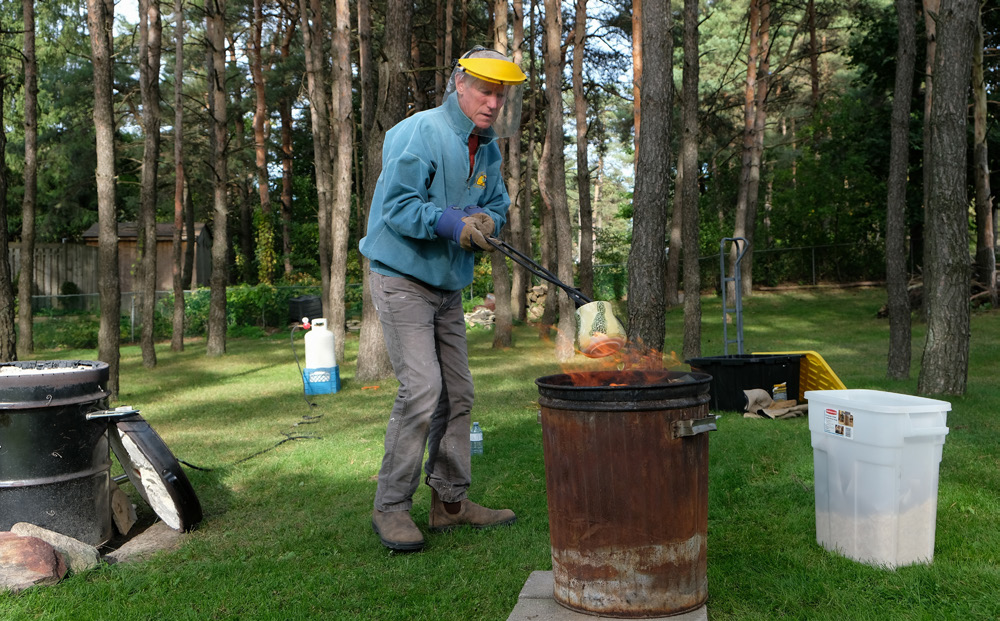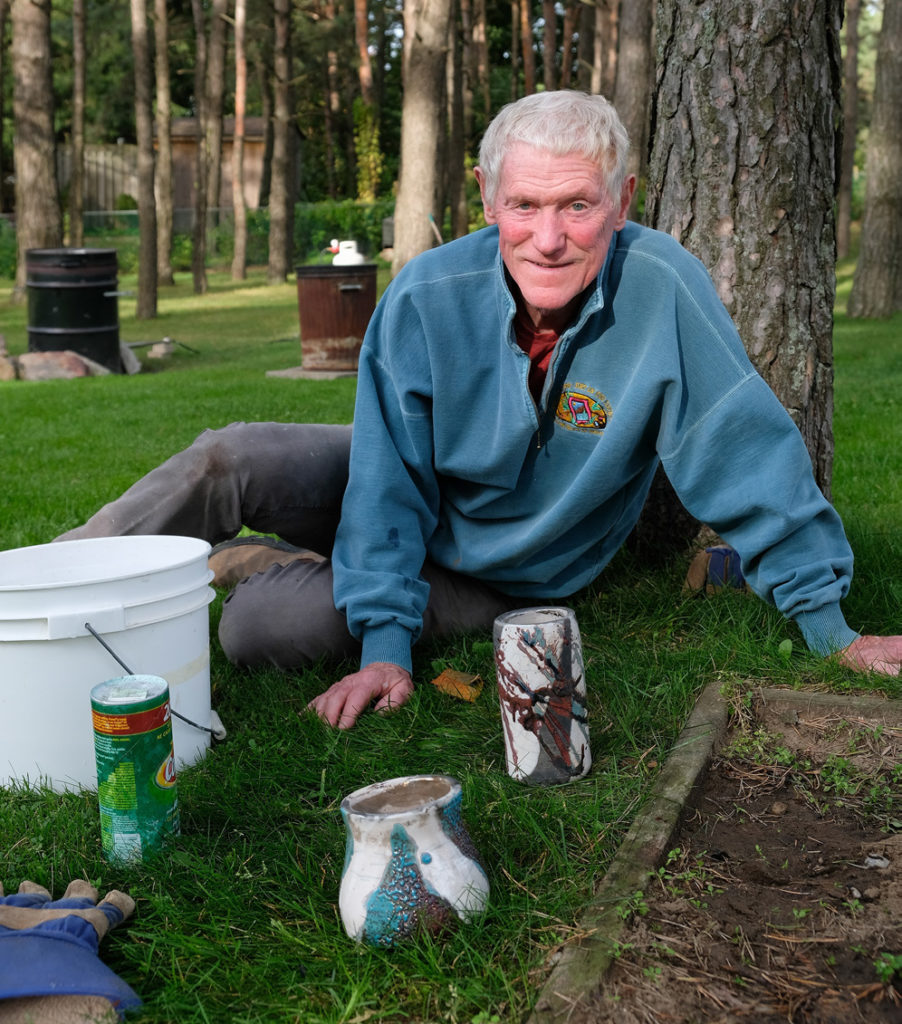The Art of Fire and Smoke
We visited Ed Keith and lifetime partner Pam, both retired schoolteachers, at their home on the edge of Ballantrae. The property is large by most residential standards, dappled with shade from an open Loblolly forest, and backs onto Country Casa Daycare. Ed and Pam met while attending Camp Walden, an art camp in Bancroft.
Ed gave a live demonstration in his backyard to show us how he creates his pottery. Ed is a bit of a black magician in my estimation, being someone that doesn’t know anything about pottery and did not use a traditional kiln. He seemed to super heat the clay pieces in a large modified oil drum, then retrieved and threw them onto a bed of newspapers lining a large, steel garbage container. As a result, flames erupted; he then closed the lid. Ed explained how the space shuttle grade insulation, Fiberfrax, lining the first drum keeps the 1820°Fahrenheit heat from escaping. In this first stage disturbing things are happening to the pottery and glazing. When the pottery meets the second stage, a combination of smoke, soot and fire become involved. The style is rare and referred to as Raku.
Pottery made in the raku style generally refers to a type of low-firing process that was originated in Japan. The original Japanese style of raku is an outgrowth from Buddhist influences in life and especially in the tea ceremony. There are two kinds of Japanese raku: red ware, which is low fired and then cooled in the open air, and black ware, which is high fired. Neither type of Japanese raku is smoked, and this is an important point, because this is generally how it is done in North America.
Western-style raku usually involves removing pottery from the kiln while it is red hot and placing it into containers with combustible materials, like sawdust or newspapers. Once the materials ignite, the containers are closed. This secondary process produces an intense atmosphere which affects the colours in glazes and clay bodies. Sometimes, the drastic thermal shock also produces cracking, known as crackling, since it is intentional.
Because the tea ceremony was never part of American raku, American potters could be more experimental in making raku than their Japanese counterparts. It allowed spontaneity and paved the way for the creation of new shapes that capitalized on the new freedom from the rigid control of the older traditions. There is some debate as to whether American styled “raku” is raku at all. Whatever it is, it is unique and wonderful.
As for Ed, you can meet him while on the Whitchurch-Stouffville studio tour. He is Studio Site #5, and is hosting fellow artists: David Clubine, who has many years of experience in watercolour illustration, and Sarah Porter, who blends brilliant colours and textures to create works of functional glass and wearable jewellery.
On the side, Ed is a long-distance runner. He ran about 50 miles in the Haliburton Forest last weekend. Over the course of the eleven and a half hours, he said it snowed, rained and then hailed. Impressive was my first thought.


